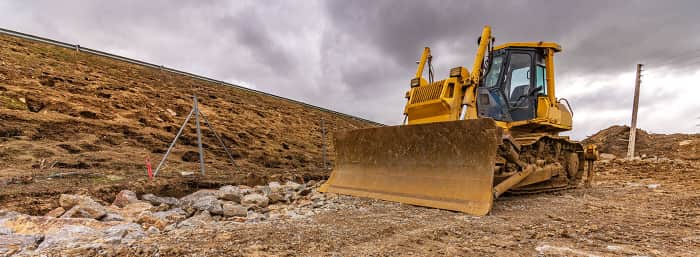Dozer Rentals
Dozer Rentals
Get pricing & availability from local rental companies:
Set Location for Rates
Set Location for Rates
Searching 7 Dozer rental sizes across rental companies.
15,000 Lbs Dozer
Daily (National Average):
$747
20,000 Lbs Dozer
Daily (National Average):
$799
30,000 Lbs Dozer
Daily (National Average):
$850
40,000 Lbs Dozer
Daily (National Average):
$1,578
50,000 Lbs Dozer
Daily (National Average):
$1,722
 If it’s available, DOZR finds it.We search all suppliers near you to source your equipment on-time for the right price.How DOZR Sources Equipment
If it’s available, DOZR finds it.We search all suppliers near you to source your equipment on-time for the right price.How DOZR Sources Equipment Flexible cancellation.In case you need to cancel your order, let us know as soon as possible to avoid cancellation fees.Cancellation Policy
Flexible cancellation.In case you need to cancel your order, let us know as soon as possible to avoid cancellation fees.Cancellation Policy We deliver your equipment where you need it, when you need.Simply set your delivery preferences in checkout and our team will handle the logistics.Delivery & Transportation
We deliver your equipment where you need it, when you need.Simply set your delivery preferences in checkout and our team will handle the logistics.Delivery & Transportation Equipment service.Breakdowns happen; we get you repairs or replacements fast to minimize downtime. The DOZR Team is available Mon–Fri between 8am and 5pm EST for any and all...Learn More
Equipment service.Breakdowns happen; we get you repairs or replacements fast to minimize downtime. The DOZR Team is available Mon–Fri between 8am and 5pm EST for any and all...Learn More Control your rentals with ease.After your order is placed, you can easily access and manage the rental, like extending and off-renting, right from the confirmation email.Managing Your Rental
Control your rentals with ease.After your order is placed, you can easily access and manage the rental, like extending and off-renting, right from the confirmation email.Managing Your Rental Need attachments?Buckets, thumbs, forks, augers – simply specify what you need in Checkout and The DOZR Team will make it happen.Attachments & Requests
Need attachments?Buckets, thumbs, forks, augers – simply specify what you need in Checkout and The DOZR Team will make it happen.Attachments & Requests More Questions?Our FAQ has answers.
More Questions?Our FAQ has answers.
80,000 Lbs Dozer
Daily (National Average):
$3,530
100,000 Lbs Dozer
Daily (National Average):
$6,900
Recommended Dozer Guides
The Ultimate Dozer Size Chart and Specs Guide
Trying to determine what dozer size you need for your next job? Read our comprehensive doz...
Dozer Weight & Spec Comparison ChartThe Best Bulldozer Attachments and When To Use Them
Between blades, rakes, rippers, and winches, there are some great attachments and modifica...
Dozer AttachmentsFront Loader vs. Bulldozer: Breaking Down the Differences
Trying to decide a front loader or a bulldozer for your next construction project? Learn m...
Bulldozer vs front loader comparisonComparing Bulldozer Brands: Who Makes The Best One?
Picking which bulldozer brand is the best can be challenging. To help, we took a look at t...
Compare The Best Dozer BrandsSimilar Equipment
Learn More About Heavy Construction Equipment
The Dozer: Everything You Need To Know
Dozers are one of the biggest workhorses of any medium or large-scale construction site. Learn more about bulldozers, how they work, their specs, and manufacturers in this in-depth guide to dozers and crawlers.
Read Article
Construction Equipment Machines & Their Uses
There are great machines for so many construction jobs. Here are some popular machines for some of the most common jobs in the industry.
Read Article
Moving Dirt: Why We Do It and The Best Machines For The Job
Digging, transporting and piling dirt is vital to building strong foundations and keeping construction sites safe. Learn all about moving dirt.
Read Article
Refund Policy
DOZR offers refunds within 24 hours if the equipment does not meet the specifications that were transacted on. Equipment rented on DOZR can be returned at any time by emailing equipment@dozr.com, and no further rental charges will be charged after the equipment is off-rented.
